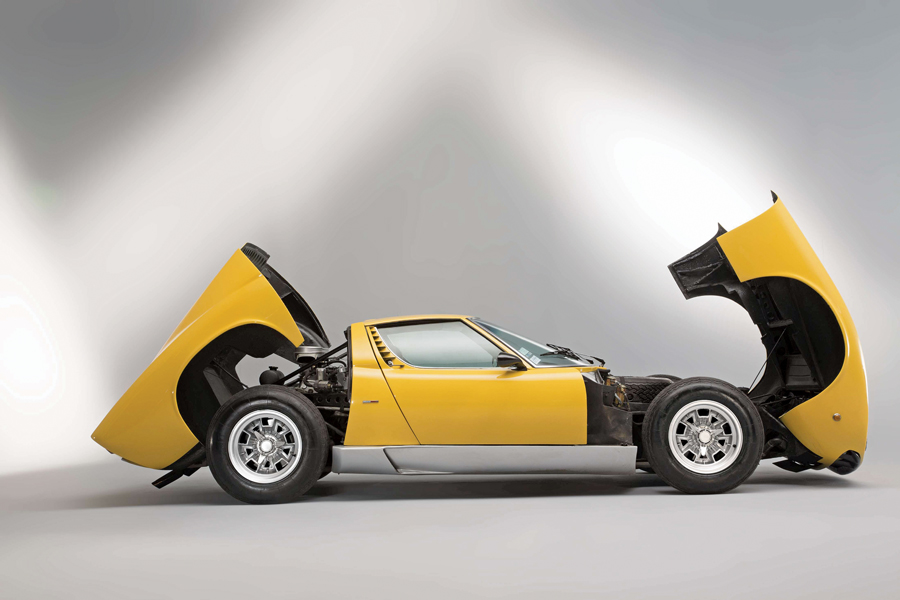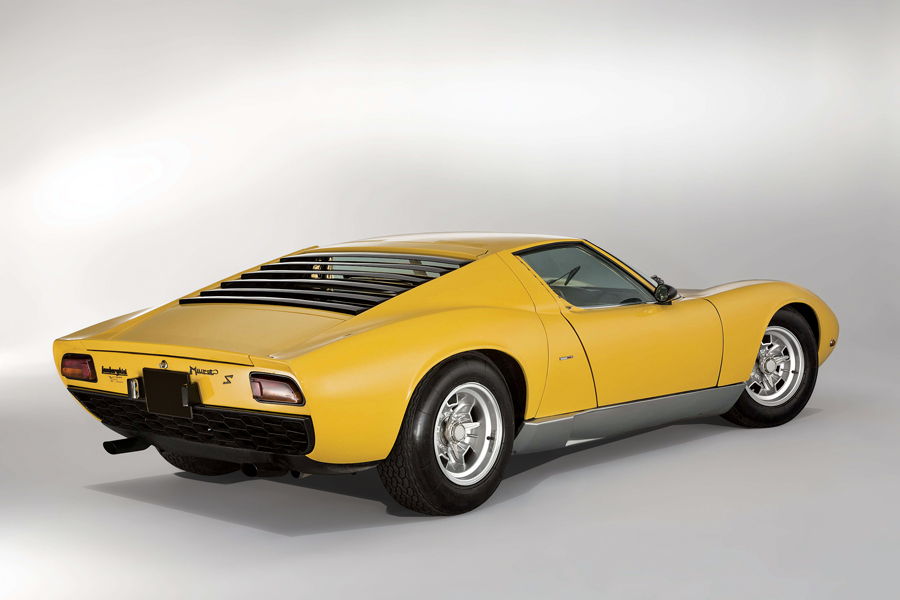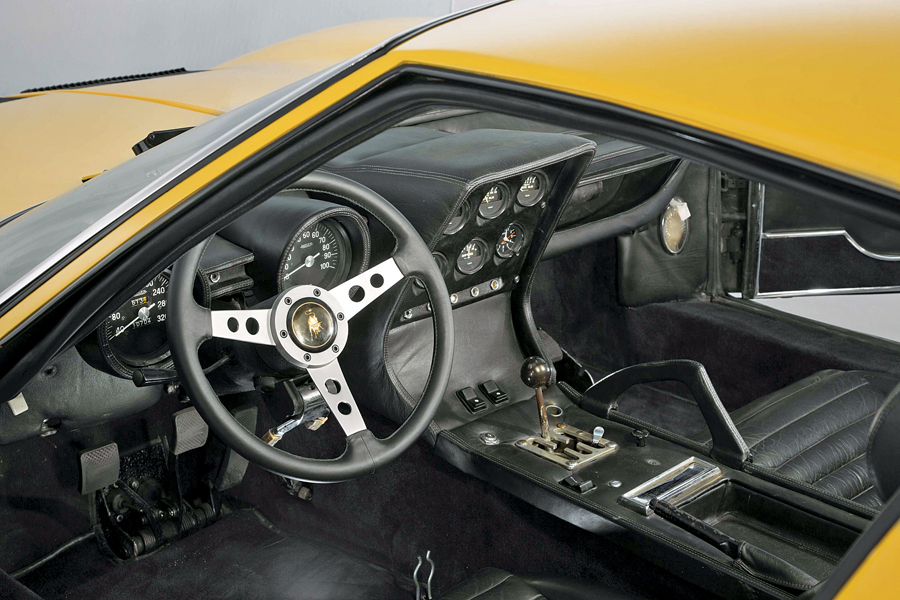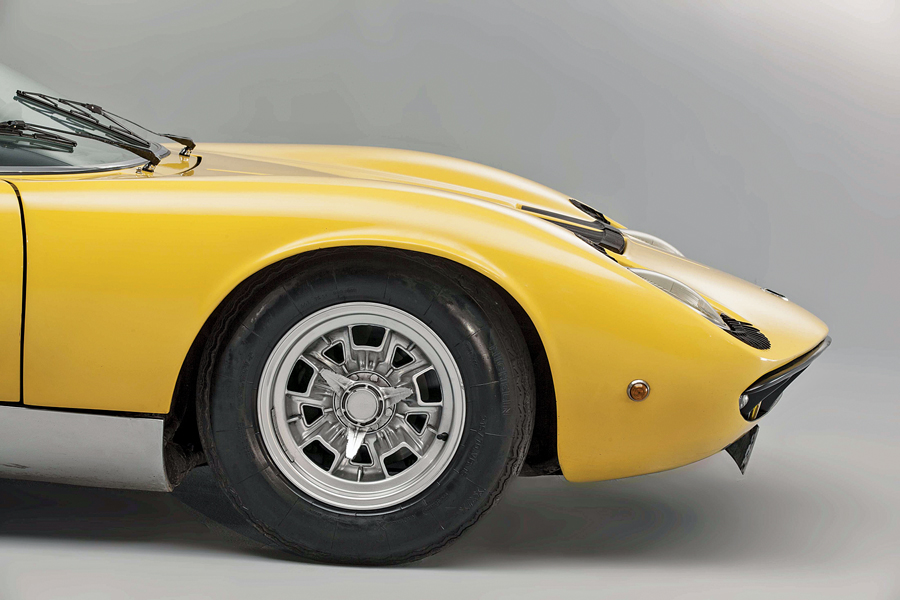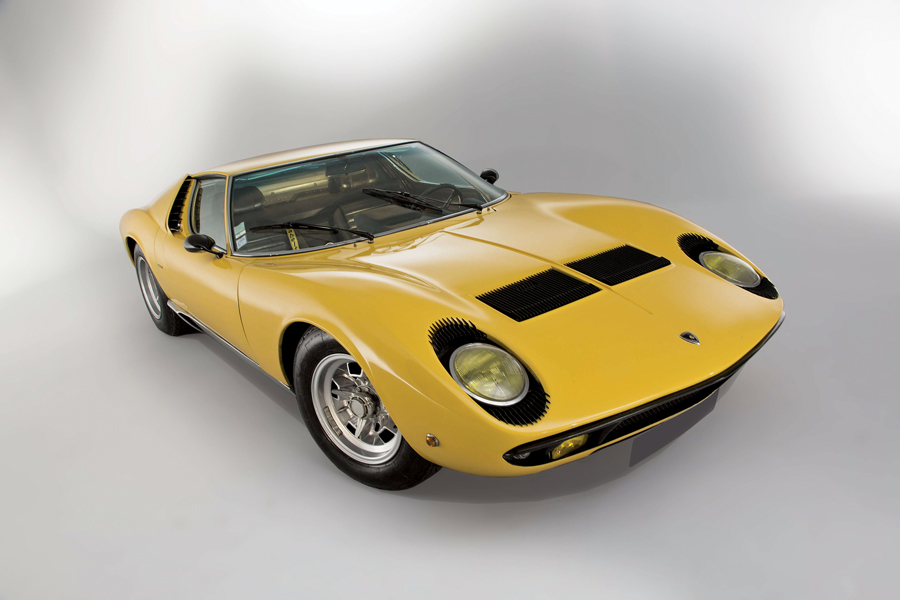SCM Analysis
Detailing
| Vehicle: | 1968 Lamborghini Miura P400 Coupe |
| Years Produced: | 1966–69 |
| Number Produced: | 465 |
| Original List Price: | $21,000 |
| SCM Valuation: | $906,500 |
| Tune Up Cost: | $4,500 |
| Chassis Number Location: | Engine compartment on firewall plate |
| Engine Number Location: | In center of head, on top of block |
| Website: | http://www.lamborghiniregistry.com |
| Alternatives: | 1968 Ferrari 275 GTB, 1968 Aston Martin DB6 Vantage, 1968 DeTomaso Mangusta |
| Investment Grade: | A |
This car sold for $978,251 (€834,400, €1=$1.17) at Artcurial’s Le Mans auction in Le Mans, FRA, on July 7, 2018.
SCM’s Executive Editor Chester Allen asked a very valid question when he sent me the assignment to write about this sale. He noted that in the same session a Countach LP400 “Periscopio” was sold for $1,145,950 — could a Countach have a higher value than a Miura?
The answer, of course, is, “Sure, why not?” I’m not here to write about the Countach, but it must be considered here as it helps to illustrate quite brilliantly the effect of fundamental attributes of value — once again.
The early Countach “Periscopio” has a median valuation in the SCM Pocket Price Guide of $915,500, not quite 1% higher than the Miura P400. For all intents and purposes, equal value. However, as has been illustrated endlessly in the current market, there are no “prices for these cars,” but rather “a price for this car.”
Both these cars had stories. They weren’t necessarily bad stories, but it’s another reflection of the market that in order to sell a car at all — and certainly if you want to sell it well — as much information as possible must be shared. In the end, the Countach had fewer stories than the Miura.
Many changes, many stories
The attributes of value most commonly sought in a small-production, high-performance car are design, specification, originality, condition and provenance. The last is especially important, as it can make a big difference if a car has gone through many — possibly unknown — owners in whose hands the level of use, maintenance, repair and restoration cannot be accurately determined.
By most traditional measures, our subject car would seem to have more than a few strikes against it.
Presented in yellow over black leather, it was originally delivered in silver gray with a mustard interior — in my eyes a stunning combination. The second owner blew up the original engine approximately three or four years from new. The fourth owner brought it back to the road with the engine and some other sundry parts from his wrecked Miura S. Sometime around the seventh owner, the car was painted green. At some point between 1998 and 2013 — while in the hands of the head of the Lamborghini Club of France — it was resprayed its current yellow and retrimmed in black.
According to the catalog description, the consignor purchased the subject car at an Artcurial sale in October 2013 (SCM# 231486). He paid $629,010 (€459,668, €1=$1.37). The SCM auction analyst commented on the apparent lack of a clear service and restoration history — and that the replacement engine was a post-catalog announcement. This catalog described the history rather better, but was still light on actual dates.
A well-sold car
Despite the many changes, the car sold quite well. It sold a bit higher than what a “no stories,” well-presented P400 might bring — or roughly the price of a very good Miura S. Factoring in the exchange rates, the buyer paid 81% more than the seller did in 2013 in euros, but only 55% higher in dollars thanks to the 17% increase in the dollar against the euro date to date.
This may be a sign that buyers seeking to experience the Miura now worry less about color changes, engine swaps and multiple-owner history than they have in the past.
Of course, it’s always down to what is available on a given day in a specific venue, but by any objective, analytical viewpoint, this car was quite well sold — especially considering that it was being sold without a current “contrôle technique,” or technical inspection.
The market understood this car
I must also state that I find it interesting that I am not surprised or offended that the car sold where it did.
It’s not unnatural that a high-performance car like the Miura was used aggressively when new, especially as it is an ex-demonstrator. It was also common for these cars to be “upgraded” on a regular basis when service was required, and that is all part of a car’s unique life experience.
What is clear to me is that when the facts are laid out in an open fashion and potential buyers are allowed to make an informed choice, the market speaks.
I am fairly certain that the new owner will enjoy driving his car, and that’s really what counts. And, since it has already changed colors twice, I hope it can once again be seen in the original silver gray over mustard. ♦
(Introductory description courtesy of Artcurial.)
